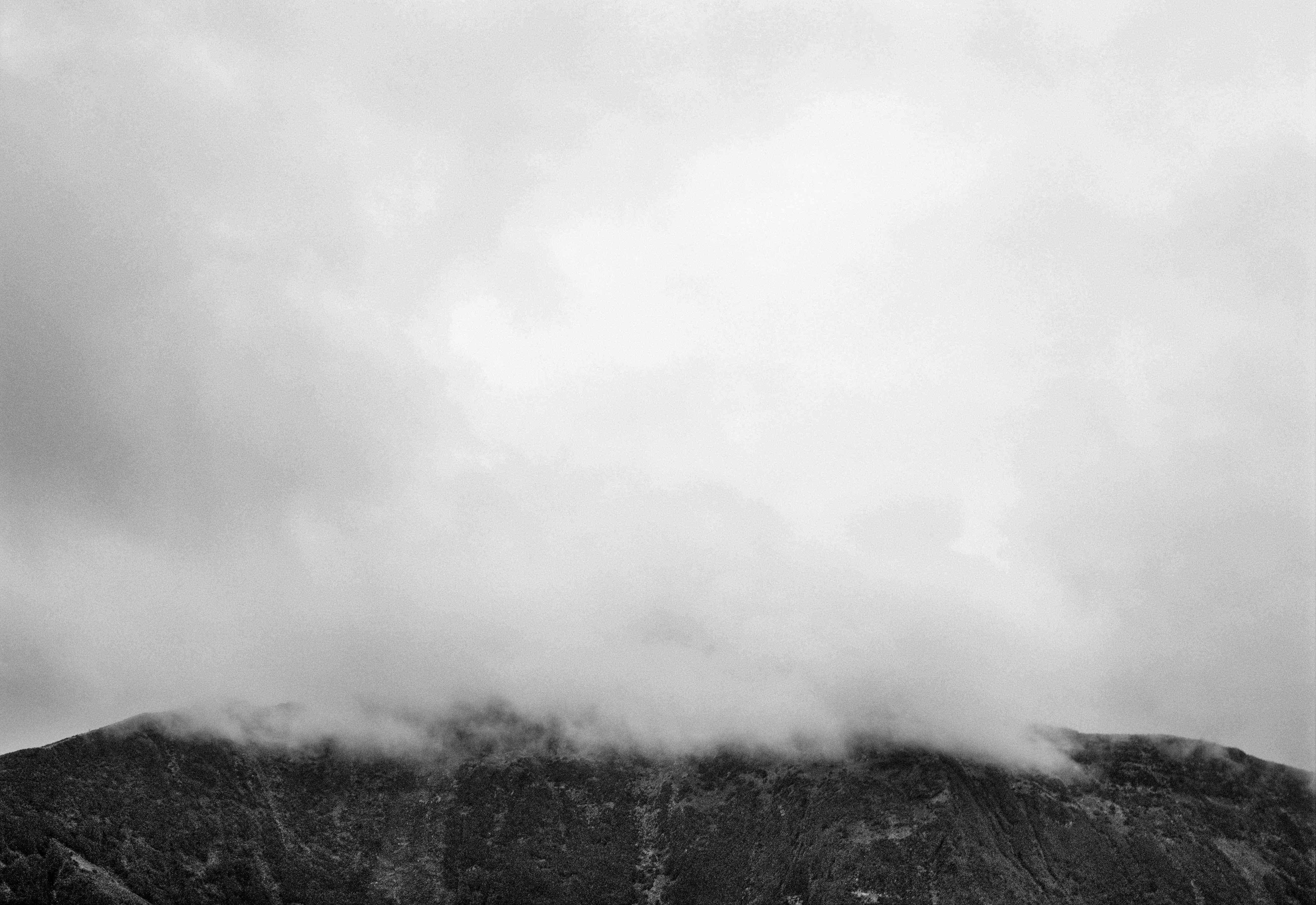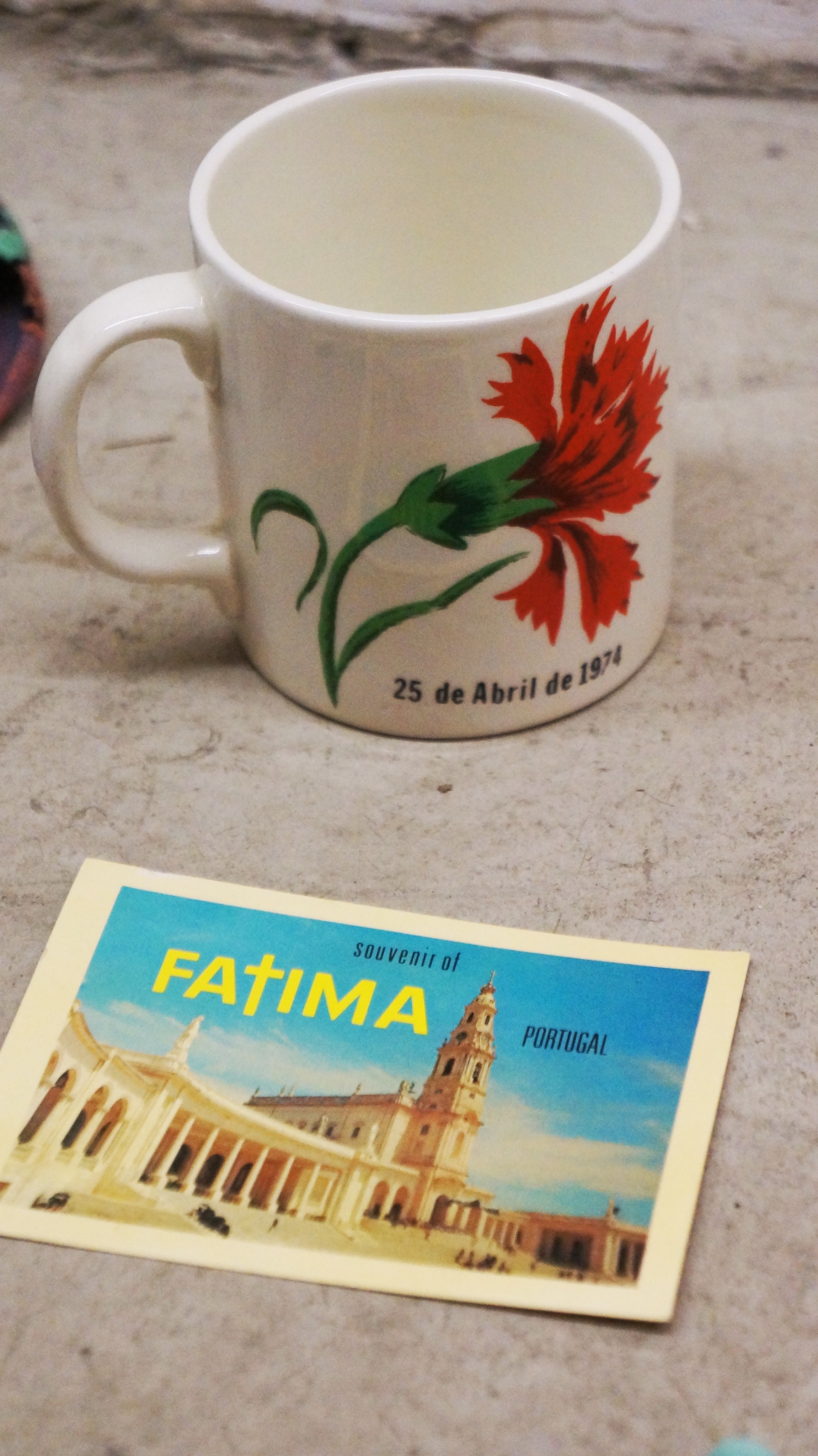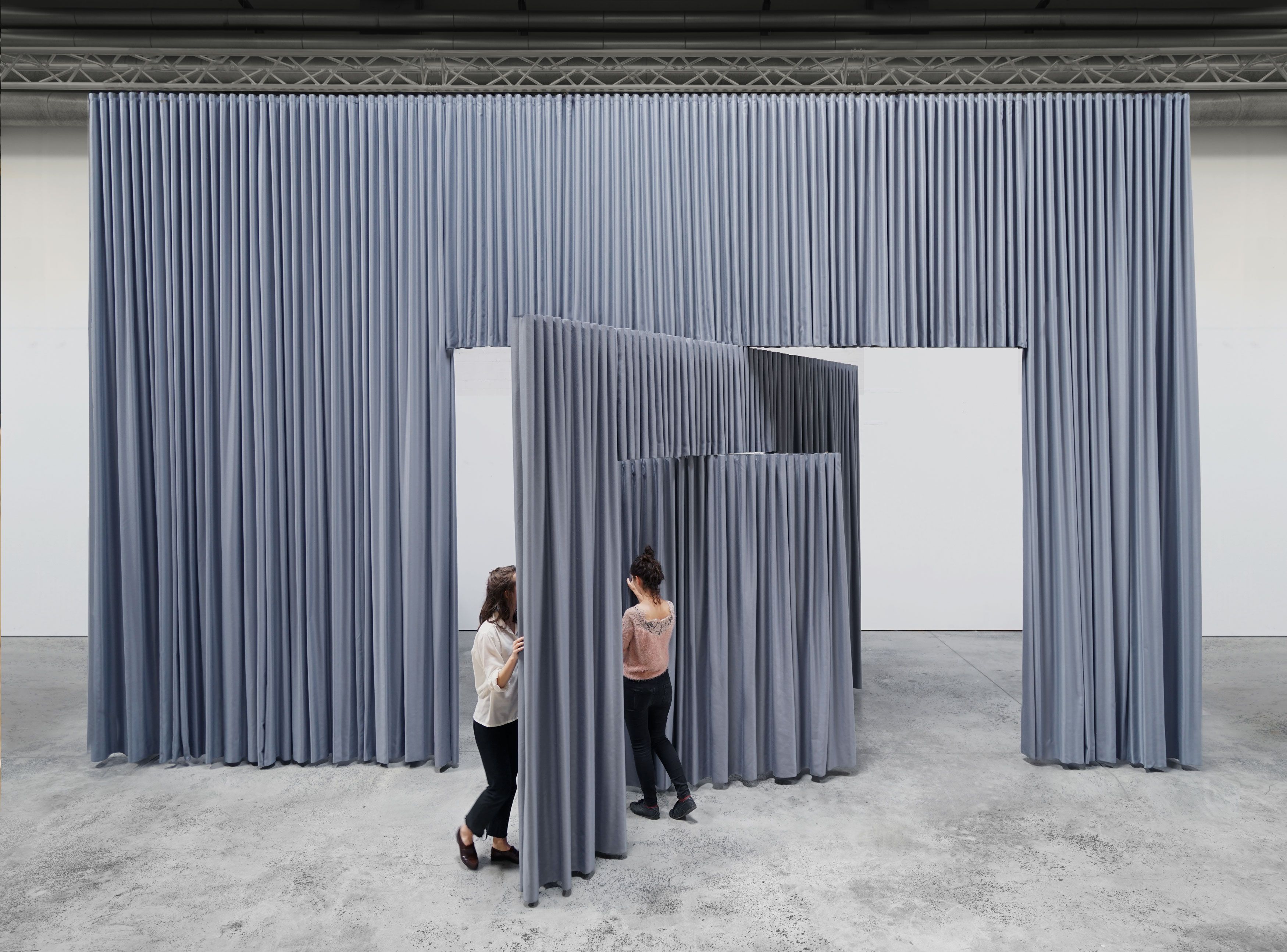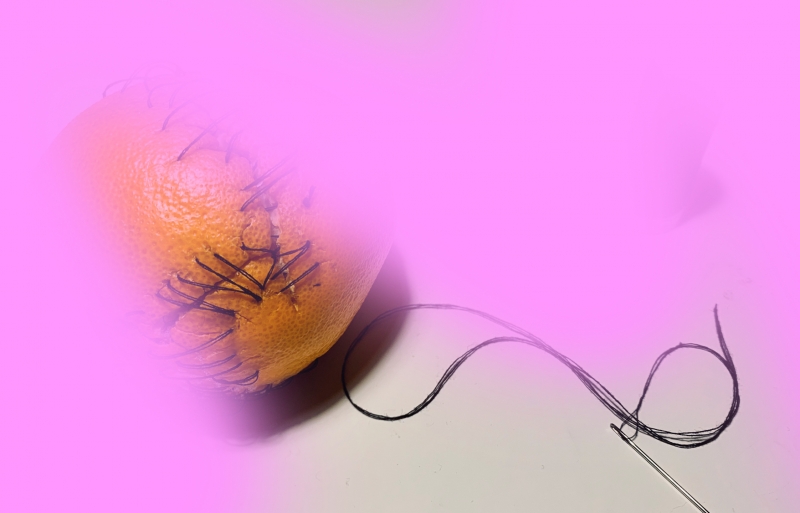
MAAT MODE – THE PEOPLE INTERVIEWS
This series of informal conversations aims to disclose the ideas and research behind a selected number of projects commissioned for maat Mode 2020. Some of these dialogues were recorded during the lockdown in April and May 2020, while others were held live in the maat Media Room, a space designed as part of Beeline, SO – IL’s museum-wide architectural intervention.
maat / Nuno Ferreira de Carvalho
In 2010 Marta Lança set up the BUALA website, of which she is still the editor and the main driving force. To mark the 10th birthday of this unique platform dedicated to “exploring the synergies between art, theory, and activism in order to stimulate public debate about the lasting impact of racism and colonialism across Portuguese-speaking communities”, maat is hosting a special cycle of presentations, talks and screening entitled “and I am sparse in dense fluidity” – Gestures of Freedom, curated by BUALA’s founder.
Marta, thank you for taking the time to answer our questions. Before we talk about the cycle you created for maat Mode 2020, it would be interesting to travel back in time, to attempt to produce an image of the situation then, the conditions and the intentions that led to you setting up BUALA in 2010.
Marta Lança
BUALA is a cultural research and production tool that can now look back on ten years of existence. Judging by the constant enthusiasm of those who read the texts and collaborate with us and by the international recognition amongst artists and researchers, I can be nothing but happy with the outcome. It was set up in 2010 because there was a real need for the dissemination of a more comprehensive and inclusive artistic profile. The influence of the social networks (opinion pieces and article filters) was growing, as were sites and blogs of a regional, national and authorial focus, but the mainstream media was not very open to new things, nor to the margins of cultural life. For example, beyond the more elitist circuits and specifically Africanist niches, extraordinarily little information was distributed in Portugal on the critical thought and artistic output of Africa and Latin America. My aim was to set up a portal that would channel and document the cultural output and knowledge of a diversity of places, gathering a whole range of materials that provided new readings and connections – thus transforming the seemingly disordered cultural memory and contributing to another way of thinking the world. We also wanted to reflect on the colonial matrix of historic and cultural relationships, their continuities and creativity, proceeding from the violent history of slavery, colonialism and occupation. By bringing together all that diversity, we were standing up for the decolonisation stance, against the false universality of theoretical and artistic output, and expanding the complexity of political subjects and cultural phenomena. Launched at the São Paulo Biennale, it has grown since 2010, contributing to critical thought and providing a home for a lot of material that would otherwise have been lost in registering the present-day actuality.
Conditions have not been easy, considering that financial support has been intermittent. We have received aid for the set-up from the Casa das Áfricas (in Brazil) and from the Gulbenkian Foundation, and after 9 years without any financial aid at all, from Lisbon City Council and Dgartes (which is now coming to an end). Thanks to relationships of collaboration and friendship in diverse countries we were able to guarantee our contacts and give continuity to collaborators and readers.
The portal provides an archive of around six thousand articles in Portuguese, French and English – from essays, interviews and critiques to artistic events: theatre performances, exhibitions, films and colloquiums; all this in addition to the 30 galleries and the Dá Fala blog. It takes an inclusive editorial and interdisciplinary approach, with collaborations from all around the world and people from the most diverse backgrounds. I would say the most original aspect is its methodology: working in a network, flexible, persistent and impactful. The idea was always one of opening up to what was proposed by others rather than predetermining or designing a thesis through the articles featured. The transdisciplinary approach and the involvement of socio-political and artistic spheres, the diversity of references, contexts and places of enunciation, the recovery of materials through a new reading, the new voices it makes known, and the important documentation that it has generated, are some of its other plus points. It has become an important tool for cultural research and output, and is consulted in curricular and research contexts, committing to the dissemination of cultural realities and the exchange of experiences.
Lana Almeida — From the “Zomia” series, 2019. Courtesy of the artist and "BUALA". Find the complete series here.
maat
The first articles, which are still online, date from April 2010. Do you think you would do the same thing today? Considering in particular the present-day needs, but also the conditions you would encounter in carrying out the same project. Would it continue to make sense? Would it still be possible?
Marta Lança
Now that we have completed ten years of regular work, I would say this reflection tool continues to make total sense, given that there is no lack of subject matters worthy of record. It has become an archive that helps to understand the approach over time to certain debates, functioning as a space of visibility for diverse histories, experiences and cultures. In other words, through the BUALA archive, we have access to artists, authors and references that have emerged and taken a stance in the ongoing debates, determining what struggles are urgent and what activities are promoted in several cities in the Global South. It remains pertinent because creativity is unending and also for the reasons of our times, where racism and oppression unfortunately continue to affect the same groups, such as people drawn toward extremist ideologies, women, immigrants. Phenomena like the crisis we now find ourselves in, which favours the strengthening of the far right, make the existence of a space of shared knowledge and regular dialogue, with a focus on the reasons for conflicts and the overcoming of hate, all the more urgent.
maat
And the future? Can you give us a few hints as to what will happen with BUALA in the coming years?
Marta Lança
Our transdisciplinary and collaborative identity has enabled us to add to the issues and the geographic and symbolic spaces (while maintaining our focus on the relationship with Latin America and Africa – the African diaspora and African descendance), including transatlantic issues, creolities and the colonial and decolonisation processes. We hope to have more original content in the form of articles, videos, galleries (virtual exhibitions), artist residencies, public presentations and training actions and also to strengthen the environmental area, maintaining the contribution of the Pólen no Ar [Pollen in the Air] section on emerging environmental conflicts and the causal links to colonial extraction processes.
We also seek to continue the dynamics of theoretical debate and the epistemological disputes involved in the production of knowledge in a post-colonial context. Committing to producing more visual galleries and carrying out more training actions and presentations in cultural spaces aids interaction with local audiences. We intend to continue to produce essays, podcasts, regular chronicles by a number of collaborators, such as Gisela Casimiro (who is participating in the BUALA cycle at maat), Djaimilia Pereira de Almeida, Rita Brás, Pedro Cardoso from Mexico for example.
All this will only be possible if we receive financial aid and can professionalise the portal. Otherwise it will have to shut down.
Phenomena like the crisis we now find ourselves in, which favours the strengthening of the far right, make the existence of a space of shared knowledge and regular dialogue, with a focus on the reasons for conflicts and the overcoming of hate, all the more urgent.
Marta Lança
maat
So what keeps BUALA alive?
Marta Lança
The best-suited metaphor for explaining how the portal works is, indeed, the idea of the network in which all participants maintain their autonomy, in terms of styles, ideas and proposals, and engender work nodes through common values and interests. While it is digital, BUALA sees itself affiliated with independent publications, distinguished by their principles of, for example, interventiveness, editorial independence, the complicity of sharing, and their non-institutionalisation. The polysemic and interdisciplinary nature has helped to break down hurdles between academia and art and between theory and practice.
BUALA’s efforts to boost diversity of viewpoints, countering the homogenisation of cultures, is also clearly aligned with the struggle against structural racism that is widespread both in Europe and, as a neo-colonial product, in African and Latin American societies. Reflecting on the relations of the past in order to understand the relationships of power in the present day, for example, helps provide in-depth knowledge of the cultures of origin of many immigrants and gives positive protagonism to Afro-descendants in Portugal, who are scarcely represented in the media, higher education and the field of the arts. It is also essential to deprovincialise the post-colonial debate in Portugal and open it up to other geographic contexts. I always try to incentivise the collaboration of Africans or the descendants of Africans in our projects with a view to countering the tendency to treat non-European cultures as “study objects”, and coming out in favour of more direct discourses on the given realities.
Kiluanji Kia Henda — “Icarus 13”, 2007. One of the images, belonging to a photo series, that was published with the first article published in BUALA, in English language. Courtesy of the artist.

maat
About the presence of BUALA in the maat Mode 2020 programme, how did the idea for the cycle of conversations and presentations “and I am sparse in dense fluidity” – Gestures of Freedom come about?
Marta Lança
It emerged out of a desire to create dialogues between case studies and the perceptions of authors of varying degrees of renown in a hybrid format that includes film presentations, research projects, conference-performances and debate – for which the leitmotif is “gestures of freedom”. In a society that is still marked by profound gender inequalities, regarding emancipation and liberty as daily processes that are disputed, we discuss conquests and rights, expectations in terms of the body, career, maternity, representativity, circulation and artistic proposals. Included in this are disease, violence, invisible work, sexual freedom, the domestic universe, the internalisation of privations and a much resolve to break with the status quo. We reflect on liberty proceeding from the actuality and from the gender perspective, contributing to a portrait of the country, in all its structures and inequalities, but also a path of intelligence, courage, emancipation and the struggle for happiness. I suggested the cycle to Beatrice Leanza and she was very open and available to accommodating the ideas.
maat
Can you describe some of the key features of the cycle?
Marta Lança
The title comes from a verse in the book Mulher ao Mar, by the writer Margarida Vale de Gato. It seemed ideal to me as a point of departure for various presentations. In the cycle we will listen to the anthropologist and videographer Catarina Barata, whose work focuses on obstetric violence, and will speak to us on giving birth and the social, cultural, economic, historic and political factors connected to it. The sociologist Inês Brasão examines the plural condition of the body and the work of women, and Sara Goulart will also deal with the body, disease and cure.
There will also be the following video and film projections, which will be followed by debates: Parto Sem Dor [Pain-free Birth] by Maria Mire; based on the story of the physician and feminist Cesina Bermudes, Raquel Freire presents a portrait of a country in a mosaic of diverse women in her film Mulheres do Meu País [Women of My Country], which will be commented on by the professor and economist Susana Peralta; Luisa Homem will shed light on the career of the geographer Suzanne Daveau in a film of the same name, and also on her archive of travel images. Rui Vilela will showcase testaments by Guinean independence fighters. Ana Gandum and Daniela Rodrigues take a look at souvenirs in the form of objects and images belonging to Portuguese migrants between Portugal and Brazil. Gisela Casimiro presents her ironic take on the history of western art, countering it with her Personal Museum, in a debate with Patrícia Azevedo da Silva. The researcher Filipa Lowndes Vicente will talk about her book, A arte sem história, mulheres e cultura artística [Art Without History, Women and Artistic Culture]. We will also get a closer look at the methodology for experience-based research into relationships, reciprocity and coexistence policies used by the anthropologist and artist Fernanda Eugénio. A visual essay by Andreia Cunha takes a satirical look at the social effects of expressing the ridiculous and the idea of failure/fall from grace. Marta Mestre will also share her curatorship processes for the Farsa [Farce] exhibition in São Paulo on language, failures and fiction.

Photo: © Rita Brás.
maat
One of the goals of the cycle is to “rethink freedom and try it over again.” Even though this was evidently a pressing urgency of our times, would it be possible to name some of the more manifest new discoveries or those that have now gained in importance due to all that we have experienced in 2020…
Marta Lança
Freedom is gauged by our capacity for action, self-determination, independence and autonomy. I think about how to augment the possibilities of inventing ourselves individually and socially? How to plant happiness to engender openness in the world? What is our real freedom of choice, beyond deciding what and how to consume? And what is, and for whom is, freedom of circulation?
The democratic maturity of a country is not unshakeable, just as the liberties we enjoy aren’t, as they are so often threatened. Proceeding from its meanings and practices in our current, artistic and social life, and expanding to other contexts, we set out to rethink that maturity. In various parts of the world the cracks are widening, giving rise to sanitary and economic crises, growing environmental issues, precariousness in employment and discrimination of certain groups. The same economic minorities in power and the echo of insurgencies and resistance, reflecting the knowledge that social well-being is far from a reality, repeatedly scream out for freedom, which is on the tip of all our tongues, but which differs greatly depending on the space, environment and moment in time in question, just like freedom of expression, which is so often an argument.
maat
The first article published in English and currently available on BUALA is “Kiluanji Kia Henda’s rampancy – from the Triennial of Guangzhou to Experimenta Design: two projects”, written by Marta Mestre, who is also one of your guests for the cycle “and I am sparse in dense fluidity”. Was there a symbolic reason for that choice? Or do these frequent and recurrent collaborations take place naturally over the years?
Marta Lança
Kiluanji Kia Henda is a great friend of mine I had the privilege of meeting him early on in his career in Luanda (from 2005 onwards), when I collaborated with the 1st Luanda Triennale. It has been interesting to follow him as an artist and his vision of the world and very distinctive, communicative, daring and ironic artistic stance. I have been following the career of the curator Marta Mestre with equal enthusiasm. For more than 15 years now we have been exchanging ideas and experiences and travelling together in Brazil, São Tomé, Mozambique, Athens and Kinshasa. Of our work collaborations, the most important was the launch of BUALA, in which Marta Mestre was involved and assisted in its conception. I am very happy to have her participate in the cycle; it is symbolic of the 10th birthday of BUALA and comes at a time in which she will be starting out on a new cycle in her career in Portugal as general curator of the Centro Internacional das Artes José de Guimarães (CIAJG).
Renata Lucas — “farsa”, 2019. Fabric, metal; 500 × 850 cm × depth variable (min. 20 cm, max. 450 cm). Photography: neugerriemschneider © Renata Lucas. Courtesy the artist and neugerriemschneider, Berlin; Galeria Luisa Strina, São Paulo; A Gentil Carioca, Rio de Janeiro.

maat
Another initiative you were behind this year was the exhibition ARQUIVO BUALA: vários narradores de uma história interminável [BUALA ARCHIVE: Several Narrators of an Endless Story] (Espaço Espelho d'Água, Lisboa, 26/08–13/09/2020). What can you tell us about that project?
Marta Lança
The BUALA galleries disseminate creative visions of a world in various states of emergency. They function as a dynamic showcase for artists and cultural phenomena in dialogue with the site’s themes. Each gallery proposes a show on a given artist, accompanying the proposal with a reflective text – be it an essay, interview or manifest. Transferring those images from the virtual to projection on television screens, as was the case in the Espelho d’Água space (realised in collaboration with the Cera Project), reactivates the archive and builds a sequence that accommodates the galleries’ proposals, changing our vision through the links to a cadence that brings together several narrators and time periods to tell an unending story of struggles, links, affections, frictions, retrospectives and futures.
BUALA ARCHIVE is a polyphonic place (just like the website), as documental as it is imaginary, moving from the particular to the worldwide. Languages and techniques share a space. For instance, painting, the parodical figures of the Cape Verdean artist Tchalé Figueira, the sketches of René Tavares from São Tomé, and the ghost city inhabited by Ihosvanny. In photography, Jordi Burch travelling through South Africa taking portraits of poor Boers, Mourad Charrach establishing ties between his western education and Muslim African origins, or Ismail Aydin revealing the diversity of the Kurdish region. In sculpture, the anthropomorphic, erotic, suffering figures of the sculptor Reinata Sabimba.
The ARCHIVE includes also watercolours and details of the exhibition organised by BUALA in 2015 with the estate bequeathed by the writer, anthropologist and film-maker, Ruy Duarte de Carvalho, Sob uma delicada zona de compromisso [Under a Delicate Zone of Compromise], curated by me, together with Inês Ponte and Ana Balona de Oliveira), and the exhibition Traffic Jam by Pascal Marthine Thayo, accompanied by an imaginary interview by Simon Njami.
Marta Lança has developed a very significant and prolific body of work in various areas, like journalism, translation, editing and publishing, and also curating and producing, in countries like Angola, Mozambique, Cape Verde, Brazil and Portugal. She was the chief-editor of "V-Ludo" (Lisbon, 2000-01), and launched "Dá Fala" (Cape Verde, 2004) and she is the founder of BUALA, that she has been running since 2010. Marta Lança is the translator to Portuguese of two major books by Achille Mbembe. She is also a Ph.D. student on Artistic Studies at NOVA School of Social Sciences and Humanities, Lisbon, where she holds a post-degree in Portuguese Literature.
As part of the celebrations of the 10 years of the BUALA platform and having freedom as an eternal ambition and activation, “and I am sparse in dense fluidity” – Gestures of Freedom, the BUALA cycle at maat proposes to think of freedom in the actual times, contributing for a portrait of Portugal in its structures and inequalities, with the help of paths of intelligence, courage, emancipation, and the fight for happiness.





